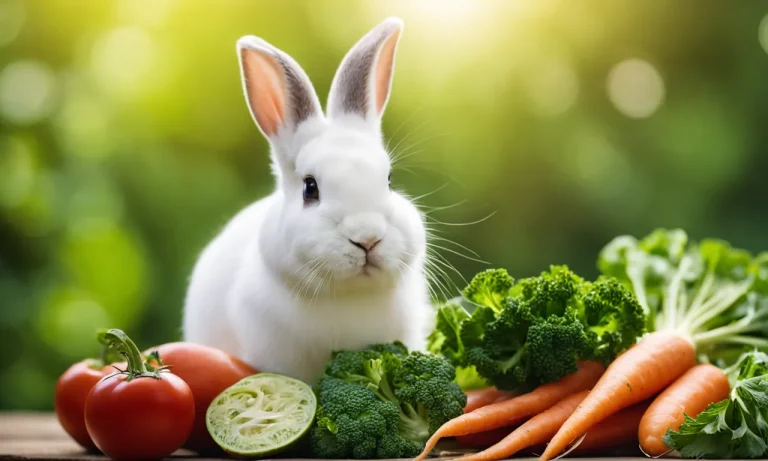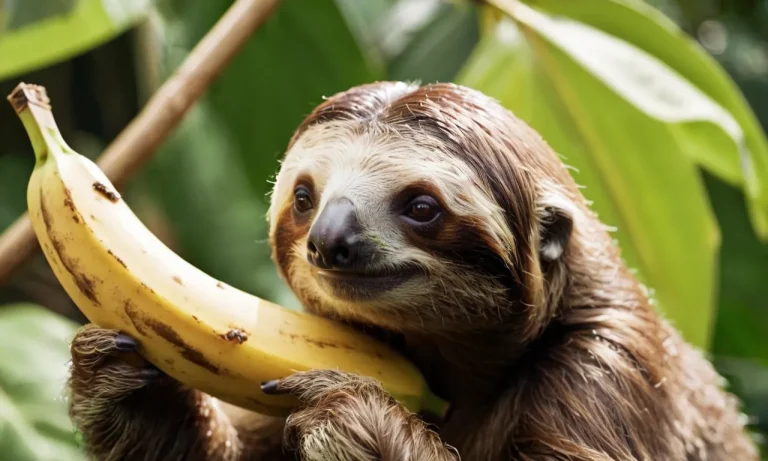The praying mantis is an insect that fascinates people with its unique appearance and behavior. If you’ve ever seen one, you probably noticed its elongated body, large prominent eyes, and spiny forelegs folded as if in prayer. But why is the praying mantis usually brown in color?
Camouflage and Mimicry Help the Praying Mantis Survive
Blending in with surroundings
The brown coloration of the praying mantis allows it to seamlessly blend in with its surroundings, providing crucial camouflage against predators and prey alike. When resting motionless amidst twigs, leaves, bark, and soil, the mantis becomes practically invisible.
This enables it to evade detection from hungry birds, lizards, and other insects looking for an easy snack. At the same time, the camouflage helps the mantis sneak up unnoticed on juicy insects to catch for its own meal.
Research shows that color patterns and markings on animals like the praying mantis have evolved over thousands of generations to maximize survival in specific environments. Mantises living on trees and shrubs, for example, tend to be mottled greens and browns to match the colors of foliage and branches.
Those on the ground are more often tawny browns, grays, and blacks to imitate rocks, soil, and leaf litter. While camouflage is innate, some insects like the praying mantis can also change colors over their lifetime to better match their surroundings.
The effectiveness of camouflage also depends on how the insect behaves. By staying perfectly still in strategic positions and avoiding sudden movements, mantises enable their cryptic coloration to work its magic.
On detecting an approaching threat, the insects often sway slightly mimicking the natural blowing of vegetation in the wind. This prevents their outline from being clearly visible to predators.
Mimicking parts of plants
Apart from camouflage, praying mantises also use mimicry to blend into their environment. Many species have leaf-like lobes on their legs and bodies as well as vein-like markings that help them resemble plant parts.
When positioned amidst vegetation, this makes mantises extremely difficult to distinguish from actual leaves and stems. Bird droppings, thorns, and flower buds are some other things mantises mimic.
Interestingly, newborns start out mostly brown and develop more green tones as they grow older. This suggests that younger mantises gain better protection by matching the brown of twigs before transitioning to resemble green leaves as adults.
Some species also exhibit sexual dimorphism with adult females being green and better camouflaged while the more mobile males tend to be brown.
While camouflage and mimicry help mantises survive, these defenses can be overcome by very alert predators. Birds, for example, may still notice a mismatch between the swaying of a disguised mantis and actual leaves around it.
And reptiles like lizards have highly accurate visual systems able to distinguish subtle prey outlines. This ongoing evolutionary arms race of detection and deception has produced the fascinating camouflage strategies we see in the praying mantis today.
Pigments and Physiology Produce Brown Color
Melanin deposits in exoskeleton
The exoskeleton of a praying mantis contains deposits of melanin, a pigment that produces brown and black colors in insects. Melanin granules accumulate in the cuticle, the hard outer layer of the exoskeleton, as the mantis develops from nymph to adult.
These melanin deposits are part of what gives mature praying mantises their distinctive brown coloration.
The amount of melanin deposited in the exoskeleton can vary between mantis species and individuals. Some species have darker brown coloration due to higher levels of melanin. And within a species, some individuals may be darker or lighter depending on melanin production and genetics.
Combination of pigments result in brown
While melanin plays a key role, praying mantises also produce other pigments that contribute to their coloration. For example, carotenoids and pterins are pigments that produce yellow, orange, and reddish hues.
The combination of melanin, carotenoids, and pterins results in the characteristic brown tones seen in most praying mantis species. The exact blend and proportion of these pigments leads to variation between different shades of brown.
In addition, some species have more vibrant colors due to higher levels of carotenoids. For example, the orchid mantis has bright pink coloration that helps it blend in with orchid flowers.
Evolution Led to Brown Becoming the Dominant Color
The praying mantis has evolved over millions of years to develop its iconic brown coloration as a form of camouflage and protection. Here’s an in-depth look at how and why evolution favored brown as the main color for many praying mantis species:
Camouflage Advantage
The primary driver behind the brown coloration of praying mantises is camouflage. Blending into their surroundings helps praying mantises avoid detection by potential predators and sneak up on unsuspecting prey.
Most species inhabit areas with brown, dried vegetation which allows their natural brown hues to provide effective camouflage. This confers a survival advantage, as those with brown colorations are less likely to be eaten or noticed by prey.
Background Matching
Praying mantises are masters of background matching. Their brown bodies allow them to seamlessly blend in with the brown grasses, branches, leaves, and bark that form their natural habitat. Species found in drier, browner environments tend to be light brown or sandy brown.
Those in greener areas exhibit darker brown tones. This ability to closely match the prevailing background colors in their habitat helps mantises stay hidden from threats.
Disruptive Coloration
In addition to overall brown coloration, most praying mantis species have disruptive patterns and markings in darker brown, black, green, and tan. These break up the mantis’ outline and shape, making it even harder to detect when stationary among vegetation.
For example, a symmetrical dark brown marking down the middle of the wings can disguise the body profile. Such disruptive coloration builds on the camouflage benefits of the brown base color.
Desert Camouflage
Desert species like the Blepharopsis mendica exhibit an extremely effective sandy brown camouflage. Their coloration allows them to blend seamlessly into desert environments, avoiding visual detection from both predators and prey.
This conferrs a significant evolutionary advantage in the harsh desert conditions.
Tree Bark Mimicry
Some species like the Bark Mantis are masters of camouflage through bark mimicry. Their brown and tan coloration causes them to resemble tree bark and lichens. When stationary on a tree trunk, they are almost impossible to distinguish visually, even from a close distance.
This provides life-saving camouflage.
Sexual Selection
In some species, brown coloration has also emerged as a sexually selected trait. For example, female Violin Mantis are more likely to mate with brown males. This sexual selection reinforces the advantage of brown camouflage, further driving its dominance.
Exceptions: Green and Other Color Variants Exist
Green mantises
While brown is by far the most common color for praying mantises, some fascinating green varieties do exist. The most notable is the green mantis, which can be found in certain tropical and subtropical regions.
These vibrant green insects are masters of camouflage, blending in perfectly with leaves and stems in their environments.
Scientists believe the green coloration enables better camouflage and gives these mantises an evolutionary advantage in their specific habitats. By being green, they can evade predators and sneak up on prey more effectively.
Some specific green mantis species include the Deroplatys desiccata, found in Southeast Asia, and the stunning Pseudocreobotra wahlbergii, native to Southern Africa. So while uncommon, green praying mantises offer a vivid and spectacular alternative to their typically brown relatives.
Flower mantises
Even more remarkable are the flower mantises, which exhibit an incredible array of pink, white, purple, and yellow color variations. These vibrant insects, including species like the orchid mantis and ghost mantis, have specially adapted color patterns and body shapes that allow them to mimic flowers convincingly.
This exceptional camouflage enables them to ambush prey irresistibly drawn to what appears to be a tempting bloom.
In fact, according to a 2022 study published in Current Biology, flower mantis females tend to be more brightly colored than males, likely as an adaptation to attract more prey for egg production. So the spectacular appearance of flower mantises serves an important evolutionary purpose, even as it dazzles us with its beauty.
Never underestimate the wonders of natural selection!
The Brown Color Varies in Shade
Depends on species
The brown color of a praying mantis can range from light tan to a darker, richer brown depending on the particular species. Some species, like the European mantis, tend to be a pale brown or tan. Others, like the Carolina mantis, are a deeper chocolate brown.
Here are some of the factors that influence the shade:
- Environment – Mantises that live in drier, open environments tend to be lighter and more camouflaged. Those in forests and jungles tend to be a darker brown.
- Stage of life – Nymphs (baby mantises) are often lighter in color. As they mature, their exoskeleton darkens and becomes richer in tone.
- Geographic location – Mantises in tropical regions tend to be darker than those in temperate areas.
- Species traits – Some species naturally produce more melanin and inherently exhibit a darker brown hue.
Gets darker with age
The exoskeleton of a praying mantis darkens as it ages and molts into an adult. Newly emerged nymphs are often quite pale in color. But with each successive molt, their bodies produce more melanin and the shade gradually deepens. Here’s a more detailed look at how time affects their color:
- First instar – Very light tan or yellowish. No wings or wing buds present.
- Second instar – Slightly darker tan/brown. Wing buds visible.
- Third instar – Richer brown, better camouflage. Wing buds longer.
- Fourth instar – Darker brown with hints of green. Wing pads cover half the abdomen.
- Fifth instar – Much darker adult coloring. Full wing pads.
- Adult – Darkest brown/green. Fully formed wings.
So as a general rule, praying mantis nymphs are significantly lighter than the mature adults of the same species. This helps them blend into their environments more effectively when vulnerable in early stages, then develop darker camouflage as they grow.
The change is subtle early on but quite dramatic once they become adults.
Conclusion
In summary, the praying mantis is usually brown primarily as a form of camouflage from predators and prey. The brown color comes from pigments in its exoskeleton combined with a physiology adapted over evolutionary time for this hue.
There are some color exceptions, with green and flower mantises occurring in certain environments. But across most species, brown remains the standard—an effective shade for survival.







